The capital of Spain’s Catalonia region, Barcelona is a cosmopolitan city that offers various attractions and activities that every tourist will surely get excited about. It offers history through many old and impressive buildings and medieval streets, culture and arts by seeing its museums, and natural attractions like sprawling green spaces, enchanting labyrinths, and more. Also, the city has numerous churches that differ in architectural style and has a lot of stories to tell. Make sure you know about them, or you didn’t really visit. In case you have no idea of what awaits you here, check out our list of the best places to visit in Barcelona, Spain, and have fun exploring.
1. Museu de la Xocolata (from USD 7.0)
Set in the former Sant Agustí monastery, which is a historic building in Barcelona, Museu de la Xocolata is a private museum that tells the history of chocolate in Europe, including its origin, evolution, trade system, and many more. Apart from this, you’ll also see sculptures made of chocolates, created by excellent pastry chefs in Catalonia. The museum is best visited with children, so make sure you let them come along when you drop by. Another fascinating thing about the place is its chocolate-made entrance ticket that you can eat while exploring around the property.
Museu de la Xocolata Admission Ticket
Duration: 1 to 5 hours
2. La Barceloneta (from USD 78.0)
A popular seaside neighborhood in Barcelona, La Barceloneta is where the locals often go to relax, swim, and dine. It is also where the beach of Sant Sebastia is located, which is famous for sunbathing and surfing. There are numerous nightspots and tapas restaurants in the area, so make sure to try at least one of them before leaving town. Additionally, you should ride the Port Cable Car for astonishing views of the city that is uninterrupted all the way to the hill of Montjuic.
Tip from tour guide

One of the best things to do in La Barceloneta is to take the Port Cable Car and enjoy the picturesque views below. Did you know that this aerial tramway was built for the World Exposition of 1929 but opened in 1931 due to a delay? Today, it remains in use and is a fun tourist attraction offering spectacular views. It departs from the beach in Barceloneta and transports you up to Montjuïc.
Small-Group Craft Beer and Tapas Tour in La Barceloneta
3. Poble Espanyol (from USD 14.63)

Located on Montjuic, this open-air museum has an area of 49 square meters (527.43 square feet) and consists of 117 building replicas that depict different architectural types from every region in Spain. Apart from the buildings, here you’ll see craft workshops; artworks of famous artists like Picasso, Miró, and Dalí; and different audiovisual shows portraying the Spanish culture. Also, you’ll learn the history, tradition, and local cuisine of the country. You’ll find out a lot about Spain when you visit, so make sure you explore every corner and street of the facility.
Barcelona: Poble Espanyol Skip-The-Line Ticket
You might be interested in these Airbnbs!
4. La Sagrada Familia (from USD 57.0)
Another creation of Antoni Gaudi, La Sagrada Familia is an unfinished basilica in Barcelona that became so important because of its luxurious design and broad dimension. The basilica is also a UNESCO World Heritage-listed cathedral. Apart from the lush interior and jaw-dropping exterior, La Sagrada Familia features a museum where you can see the development of the church since the 19th century, through its display of plaster models, photographs, drawings, and more. Take your time exploring the area and listen intently to the guide to learn more. Additionally, don’t forget to take awesome photos.
Tip from tour guide

The Sagrada Família is Antoni Gaudí's best-known work and has become an undisputed symbol of Barcelona. This unique modern temple has been under construction since 1882. Gaudí devoted himself fully to the task until his death in 1926. During his lifetime, Gaudí completed the crypt and the Nativity façade on the side, both of which have been declared World Heritage Sites.
Fast Track Sagrada Familia Guided Tour
Duration: 1 hour 30 minutes
Barcelona Tour Guide
Perry Tours
Hello! My name is Perry, originally from the heart of Belgium, famed for its waffles and fries. However, it wasn't just the call of the Spanish sun that brought to Barcelona, but rather a captivating encounter with a German-Uruguayan beauty in Thailand. This led to the birth of our son in Ibiza, and eventually, more than two decades ago, I found myself in the vibrant city of Barcelona. My pa... Read more
Tours by Perry
5. Barcelona Aquarium (from USD 30.0)
Located at Port Vell Harbor, Barcelona Aquarium is one of the largest attractions of its kind in Europe. It features over 35 aquariums that have more or less 11,000 animals that embody the 450 species living in the facility. It only proves that the aquarium has the most remarkable collections of Mediterranean marine life in the world. Here you can see sharks, eels, rays, and other fishes swimming playfully in the tanks. Additionally, Barcelona Aquarium has a cafe and gift shop, where you can dine, rest, and buy some souvenirs.
Skip the Line: Barcelona Aquarium Ticket
Duration: 1 hour
6. Casa Milà (from USD 30.35)

Another brilliant work of Antoni Gaudi, Casa Mila (or more commonly known as La Pedrera) is one of the top places to visit in Barcelona because of its functionality and unique design, just like other works of Gaudi. You can see this in the stunning staircases and corkscrew chimneys, the latter becoming an iconic symbol of Gaudi’s Barcelona. If you wish to have a closer look at these dreamy chimneys, you can head up to the rooftop. Apart from the interior, you must see the Espai Gaudi exhibit as well, which features the most comprehensive collection of the life and works of Antoni Gaudi. Additionally, the building serves as a cultural event place and houses the headquarters of Catalunya La Pedrera Foundation, residential apartments, and commercial space for businesses.
Tip from tour guide

The outer wall of Casa Mila is inspired by the sea, and the balconies represent seaweed. After many years of neglect, this building was declared a World Heritage Site in 1984 by UNESCO and was restored and opened to the public in 1996.
Since it's home to the Catalunya La Pedrera Foundation, it serves as a major cultural center renowned in Barcelona for the range of activities it organizes and the various museum spaces and rooms for public use that it provides.
Barcelona: La Pedrera-Casa Milà Ticket & Audio Guide Option
7. Museu Nacional d'Art de Catalunya (from USD 13.01)

A must-visit attraction for art enthusiasts, Museu Nacional d'Art de Catalunya prides itself on having the finest exhibit of Romanesque mural paintings throughout the world. The museum features two floors full of artworks by Catalan modernist artists like Gaudi and Casas, as well as European Renaissance and Baroque painters, including Velazquez and Tiziano. Also, you’ll find here a room containing a great collection of photographs. After hours of artwork browsing and learning about the history of the building, you should climb up the rooftop and see a spectacular and uninterrupted view of the city.
Barcelona: Museu Nacional d'Art de Catalunya Entrance Ticket
8. Arco de Triunfo Barcelona

Designed by architect Josep Vilaseca i Casanovas, Arco de Triunfo Barcelona is a triumphal arch used as the main passage gate to the Barcelona World Fair in 1888. The arc is made of vibrant brickwork using Mudejar architectural design. The gate leads to a pathway lined with palm trees, which is perfect for strolling and biking. Also, there is a little crowd here and a few street entertainers to make your experience a lot more memorable.
Arco de Triunfo Barcelona
Address: Passeig de Lluís Companys, 08003 Barcelona, Spain
Website: Arco de Triunfo Barcelona
Opening hours: 24 hours (daily)
9. Gran Teatre del Liceu

A significant and famous opera house in Barcelona, Gran Teatre del Liceu is one of the iconic emblems of the city. It has surpassed many disasters like being burned and bombed since it opened in 1847. The opera house offers a daily tour, wherein an English-speaking guide will let you see the magnificent Theater Vestibule, the world-class auditorium, the stunning Hall of Mirrors, and the beautiful foyer while narrating about the events and gatherings that took place in the opera house. You should also watch a show here to experience its magic.
Gran Teatre del Liceu
Address: La Rambla, 51 - 59, 08002 Barcelona, Spain
Website: Gran Teatre del Liceu
10. Temple of the Sacred Heart of Jesus

One of the most remarkable religious sites in Barcelona, the Temple of the Sacred Heart of Jesus is set on the highest spot of Tibidabo Mountain, which gives it a striking and majestic silhouette. The temple has an uncanny resemblance with Basilique du Sacre Coeur de Montmartre in Paris, based on its aesthetic and location. Once inside, you’ll find two floors, the second floor being the church and the ground floor containing a crypt in neo-Byzantine style. Don’t forget to respect the religious site and follow all the rules when you visit.
Temple of the Sacred Heart of Jesus
Address: Cumbre del Tibidabo, 08035 Barcelona, Spain
Website: Temple of the Sacred Heart of Jesus
Opening hours: 11am - 5:35pm (daily)
Tip from tour guide

Venture to the peak of Mount Tibidabo, 512 meters above sea level, where the stunning Church of the Sacred Heart (Iglesia del Sagrat Cor) stands. It is no coincidence that this name is very similar to the famous Sacre Coeur in Paris. These two churches not only have a similar name but also a striking similarity in their architecture. With majestic Romanesque and Byzantine influences, they both exude a timeless beauty.
The name "Tibidabo", comes from the Latin "Tibi dabo" which means "I will give you." It refers to a Biblical story in which the devil takes Jesus to a mountaintop and offers him all the kingdoms if he would worship the devil. Jesus responded with the words, "Tibi dabo," meaning "I will give you."
11. Platja de la Nova Icària

Located between the beaches of Bogatell and Barceloneta, Platja de la Nova Icària (or Nova Icaria Beach) is popular among locals because it has fewer crowds and is more peaceful than other nearby beaches. The spot features a 400-meter (0.25 mile) stretch of sand, with an extensive promenade and Olympic Port as its backdrop, making it near restaurants and shops. Also, you can try many water sports here, like windsurfing, kayaking, paddleboarding, and more.
12. Agbar Tower
If London has Gherkin, Barcelona has Agbar Tower. It is one of the most iconic towers in Catalan, built by the French architect Jean Nouvel. Its exterior is like no other, with its unique shape and colorful design—you’ll surely be gaping in awe. It is also a highly modern building, with a computer-controlled LED lighting system and temperature-control features. Thus, it is dubbed the gateway to the urban elite area of Barcelona, the Poblenou neighborhood. In addition, the structure is famous every New Year, when it serves as a meeting point of people wanting to experience its spectacular display of color and lights.
Agbar Tower
Address: Avinguda Diagonal, 211, 08018 Barcelona, Spain
Opening hours: Mon - Fri: 9am - 6pm (closed on Sat - Sun)
13. Laberint d'Horta Park (from USD 213.0)
If you’re into history, beautiful scenery, and nature, then you’ll love Laberint d'Horta Park. It is a historical park located in the former Desvalls family estate, in the district of Horta-Guinardó. Among the things you’ll find here is the striking Torre Soberana, which is a family mansion that dates back to the 14th century, along with a neoclassical-style labyrinth with Greek gods’ statues at the entrance, elegant pavilions that represent Roman temples, a 19th-century romantic garden, and other beautiful things. Additionally, there are ponds, waterfalls, a shady forest, and a pathway full of flowerbeds—all of which will instantly relax you.
Barcelona Private Tour to Tibidabo Mountain
Duration: 3 hours
14. Casa Vicens Gaudí (from USD 17.34)

Located in the neighborhood of Gracia, Casa Vicens is a house turned museum and the first building ever designed by Antoni Gaudi. It is a great example of Art Nouveau and uses neo-Mudejar architectural style, as well as Oriental and neoclassical design. Also, Gaudi used different materials to finish the building, including concrete, glass, ceramic tiles, and iron. The building is already over a hundred years old but still has the same beauty after many years of restorations. Don’t forget to take a photo or it didn’t happen.
Barcelona: Gaudi's Casa Vicens Skip-the-Line Entrance Ticket
Duration: 1.0 day
15. Passeig de Gràcia
Located in Eixample, Passeig de Gracia is a well-known avenue that stretches from Placa Catalunya to Carrer Gran de Gracia. A lot of locals and tourists flock to this area because it is an important business center, with many establishments such as shops, restaurants, bars, and many more. Also, here you can see numerous eye-catching buildings designed by Antoni Gaudi. Make sure to explore these historical treasures when you visit, and try the many dining options available.
Passeig de Gràcia
Address: Barcelona, Catalonia, Spain
Website: Passeig de Gràcia
16. Plaça de Catalunya
Plaça de Catalunya (or the Square of Cataluña) is considered the city center, and it is where the old city and Eixample meet. The square is a popular starting point if you want to explore famous attractions, including the buildings designed by Antoni Gaudi. It is 50,000 square meters (538,196 square feet) big and features beautiful fountains and statues, as well as groups of pigeons in the center of the plaza.
Plaça de Catalunya
Address: Plaça de Catalunya, 08002 Barcelona, Spain
Website: Plaça de Catalunya
Tip from tour guide

Plaça de Catalunya is the most central area of Barcelona and a favorite meeting place for both locals and visitors. The plaza is renowned for its fountains, statues, and proximity to some of Barcelona's most popular attractions, as well as for the flocks of pigeons that gather in the center. Inaugurated by King Alfonso XIII in 1927, the plaza covers 5 hectares. Previously, the site was an open piece of land located in front of the gates to the walled city.
17. Mercado de La Boqueria
Set in the former location of the Convent of San Jose in the district of Ciudad Vieja, Mercado de La Boqueria is one of the most popular tourist destinations in Barcelona. It is a colorful market that has an area of 2,500 square meters (26, 910 square feet) and features over 300 stalls that sell varieties of items. It is the ideal place to buy fruits, vegetables, dairy products, meats, and other fresh produce. Also, you’ll find here stands that serve ready-to-eat goods, so make sure to try them as you experience being like locals hunting for home essentials.
Mercado de La Boqueria
Address: La Rambla, 91, 08001 Barcelona, Spain
Website: Mercado de La Boqueria
Opening hours: Mon - Thu & Sat: 8am - 8:30pm (closed on Fri & Sun)
Tip from tour guide

La Boqueria Market (Mercado de La Boqueria), situated on Las Ramblas, is Barcelona's most famous and picturesque market. This emblematic spot in the city, once the patio of Sant Josep Church, was inaugurated in 1836 and the official name of this market is Mercat de Sant Josep de Boqueria. Today, it stands as the largest and best-known market in Spain, drawing both locals and tourists alike. La Boqueria, with its vibrant colors and bustling atmosphere, traces its roots back to the 13th century when it began as a street market on the Ramblas. Initially, the market was open-air, where traveling sellers and farmers would sell their goods directly to the public. The iconic iron roof covering the market was completed in 1914, solidifying its status as one of Barcelona's premier attractions in the heart of the city center.
18. Gothic Quarter (from USD 48.77)

A part of the old town, Gothic Quarter (or Barri Gotic) features narrow medieval alleys that are lined with modern bars and many dining options. If you love seeing history, and not just reading about it somewhere, then you must see one of the major attractions here, Museu d'Història de Barcelona, which showcases the remains of the Roman city. As for your retail therapy, you’ll find plenty of vendors selling jewelry and other trinkets near Cathedral of Barcelona. In case you get hungry, walk down to La Rambla Avenue, and you’ll come across many stalls offering local delicacies and street foods.
Barcelona: Gothic Quarter Legends Walking Tour with Tapas
Duration: 2.5 hour
19. La Rambla

A tree-lined pedestrian street, La Rambla serves as the boundary between two quarters, El Raval and Barri Gotic. It is a landmark of Barcelona that makes the capital of Spain unique. You’ll find here numerous attractions such as Liceu Theater, a world-class opera house; La Boqueria, a famous market often crowded with tourists; and Plaça Sant Jaume and Plaça Reial. You’ll surely love strolling around and seeing different people from all walks of life. Don’t forget to buy food at the many street vendors that flock the area.
Tip from tour guide


Did you know that La Rambla is home to an extremely unique building called Casa Bruno Cuadros? In 1883, architect Josep Vilaseca was responsible for renovating this building, including an umbrella shop on the ground floor. The wrought iron Chinese dragon protruding from the facade, along with the floral elements made up of umbrellas served as an eye-catching advertisement for the store. Be sure to spot it when you visit this place.
20. Montjuïc (from USD 17.35)

Located in the southwest of Barcelona, Montjuic is a picturesque wooded hill that served as a venue of the Summer Olympics in 1992. One of the easiest ways to reach the top of the hill is through a cable-car ride in the neighborhood of La Barceloneta. The name of the hill means “Jewish mountain” because the area was once home to the Jewish community of the city.
Barcelona: Montjuïc Cable Car Roundtrip Ticket
Duration: 1.0 day
21. Picasso Museum (from USD 44.0)
Located in five adjoining houses on Montcada Street in Catalonia, Museu Picasso is an art facility that features an extensive collection of artworks created by Picasso, 4,251 in total, making it the most comprehensive in the world. Two of the most well-known masterpieces by Picasso here is “The First Communion” made in the year 1896 and “Science and Charity” in 1897. Another fact about this museum is that it is the first-ever museum constructed in honor of Picasso and also the only one built during his lifetime.
Picasso Museum Skip-the-Line Access, Walking Tour in Barcelona
Duration: 2 hours
22. Park Güell (from USD 91.1)

Located in Carmel Hill, Park Guell is a park system that is composed of beautiful gardens featuring stunning gazebos, covered galleries, exquisite monuments, gorgeous mosaics, and fairytale-like structures. Originally, Gaudi Guell built the property to serve as a private park for the 60 single residences in the area. But because the project was unsuccessful, it became a property of Barcelona in the year 1923. The place is very famous around the world, for it is considered one of the greatest works of Guell that feature modernist art. Upon entering, you’ll be mesmerized by the mixture of vibrant colors and beautiful artworks, which will make anyone envy you for just being there. Make sure to take as many photos as you want when you visit.
Barcelona: Park Güell Photoshoot Tour
Duration: 105 minute
23. Ciutadella Park (from USD 34.01)

One of the green spaces in Barcelona, and the only one during the 19th century, Ciutadella Park is a must-visit place if you want to get away from tourists and shops. It is a very lush park and is ideal for long walks and picnics with the family. You can also try to row a boat at the lake. Moreover, the Zoological Museum and Museu de Geologia are in the area, so make sure to explore them while you’re here—you won’t regret it.
Parc de la Ciutadella Tour by Electric Scooter
Duration: 1 hour
24. Casa Batlló (from USD 43.0)

Located in the heart of Barcelone is one of Antoni Gaudi’s masterpieces, Casa Batlló. It was built in 1877 and owned by the Batllo family. Now it serves as a museum, where you can see the lavish life of the 20th century through designs, decor, furniture, and other furnishings. The eye-catching house features a polychrome facade that is embellished with glass and ceramics. On its roof is a dragon, which is an allegory to the tale of Saint George slaying a dragon. Also, to make most of your time and to escape the lines, try to avail of a fast-track entry to Casa Batllo by Viator.
Tip from tour guide

When exploring Barcelona, don't miss visiting Casa Batlló, a stunning example of Antoni Gaudí's architectural brilliance. It's a remodeled version of a previously built house that underwent significant changes in 1904 by Antoni Gaudí. Since then, it has been refurbished several times.
Casa Batlló: Fast-Track Early Bird Entry
Duration: 1 hour
25. Columbus Monument (from USD 8.67)

Located at the center of Plaça de la Porta de Pau (or the Square of the Gate of Peace), Columbus Monument is a cast-iron column that is 60 meters (197 feet) tall. It was built in honor of Christopher Columbus’s first expedition to the Americas in 1942. On its foot, you’ll find bronze statues, and on the top is the figure of Columbus pointing to the sea and not to the direction of the new world he found. Also, for a spectacular view of Barcelona, you have to ride the lift to the top and have an uninterrupted view of the city, including the Gothic Quarters, Santa Maria del Mar’s bell tower, La Rambla, and many important landmarks.
Barcelona: Columbus Monument
26. Tibidabo Amusement Park (from USD 14.0)

One of the oldest and longest-running amusement parks in the world, Tibidabo Amusement Park first opened in the year 1905 and has been serving the public for over 100 years now. It offers over 25 different rides and attractions that will surely be enjoyed by everyone, especially the kids. One of the exceptional features of the park is its Tibidabo Sky Walk, which is 500 meters (1640.42 feet) long and will give you an incomparable view of Barcelona. Also, you shouldn’t miss exploring Automaton Museum and view its 30 disconcerting displays of automatons.
Barcelona: Tibidabo Amusement Park Admission Ticket
Duration: 1 day
27. Plaça d'Espanya (from USD 71.0)
One of the most visited and important squares in Spain, Plaça d'Espanya has so much to offer—from shopping to cultural heritage sites, entertaining shows, dining options, and more. You’ll find here the Magic Fountain of Montjuic that gives the public one of the best shows in Barcelona. The fountain features beautiful lights, dancing water, and music to set the phase of the show. Another must-visit is Arenas de Barcelona. A former bullring that was transformed into a modern shopping center but kept its facade, this property offers numerous retail shops and restaurants as well as a gym and a cinema.
Explore Placa España with Barcelona Professional Photographer
Duration: 1 hour
28. Joan Miró Foundation (from USD 14.0)
If you’re into contemporary art, you shouldn’t miss the chance to see the collections on display at Joan Miro Foundation. It is a living museum built by its namesake to gain international recognition as a center for contemporary art research, one that is also open to the public. The museum started with Miro’s collection, and later on, he was joined by other modern artists. You’ll find here the most comprehensive collection of Joan Miro’s artworks. Apart from the exhibits, you’ll surely be in awe of how in sync the building is to the artworks inside, thanks to architect Josep Lluis Serp.
Skip the Line: Joan Miro Foundation Barcelona Admission Ticket
Duration: 1 hour 30 minutes
29. Basilica of Santa Maria del Mar (from USD 6.0)
Located in Ribera District in Barcelona, Basilica of Santa Maria del Mar is a remarkable church that was built between 1329 and 1383, with Catalan Gothic-style architecture. At first sight, the size of the property might fool you, but it’s bigger than you think. It is one of those enormous buildings that feature symmetry and simplicity, which is unique in big medieval churches. Upon entry, you will be mesmerized with the many impressive stained-glass windows that give a dramatic play of lights to the church. Additionally, there are offered tours up to the rooftop, with an expert guide who narrates facts and stories about the construction and development of the property, as well as of Barcelona.
Skip the Line: Basilica of Santa Maria del Mar Admission Ticket
Duration: 1 hour
30. Barcelona Zoo (from USD 23.0)
Located in the heart of Parc de la Ciutadella, Barcelona Zoo is a modern facility that serves as a home to more or less 4,000 animals, including lions, monkeys, snakes, dolphins, etc. The zoo has an area of 32 acres (13 hectares) and is divided into many sections, which will take you a day to explore if you want to see everything it has to offer. To make your experience more convenient and to save time, you can ride the mini trains or the electric car for hire. Also, to contribute to the welfare of endangered animals and to honor Snowflake, a rare white gorilla who once lived in the zoo until his death in 2003, the management has created many conservation and preservation programs.
Barcelona Zoo Entrance Ticket
Come to Barcelona

Make sure you’re ready for a lot of walking and museum and church hopping when you visit Barcelona. You wouldn’t regret touring the area. And if you want to know why, read our list of the best places to see in the city, and have the best holiday ahead. Don’t tell us we didn’t warn you afterward.
Tip from tour guide

In the past year, you might have heard about a lot of ongoing roadwork in Barcelona. That's because the local authorities are trying to reduce traffic congestion in the city and create more space for cyclists and pedestrians. So, be sure to put on your walking shoes to explore these beautiful attractions in Barcelona.
Arc de Triomf
Contributed by Tour Guide, Perry Tours

This red brick triumphal arch, designed by architect Josep Vilaseca i Casanovas (1848-1910), once welcomed visitors to the 1888 World’s Fair, which took place in the famous city park of Barcelona. This park is better known as Parc de la Ciutadella. You can find the arch at the intersection of Passeig de Lluís Companys and Passeig de Sant Joan, near the Arc de Triomf metro station. With a height of 30 meters (98.42 feet), this arch of triumph stands out due to its Neo-Moorish style and unique features. Unlike other arches of triumph, Arc de Triomf has no military character. On the south side, you can admire a scene where the different participating countries are rewarded, while on the north side, the city welcomes these countries. The narrow sides of the arch display images of agriculture, trade, industry, science, and art.
Mercat del Born
Contributed by Tour Guide, Perry Tours

El Born Market began operations in 1878 and served as the central market in town until 1971. Following its closure, it fell into disrepair until restoration efforts took place from 1977 to 1981. In 2002, work commenced to install Biblioteca Provincial de Barcelona. However, extensive ruins of the medieval city were unearthed during excavations. Consequently, a decision was made to preserve the ruins and relocate the library to another site.
History
Get Trip101 in your inbox
Unsubscribe in one click. See our Privacy Policy for more information on how we use your data
















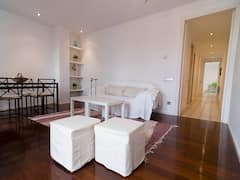


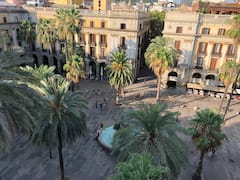







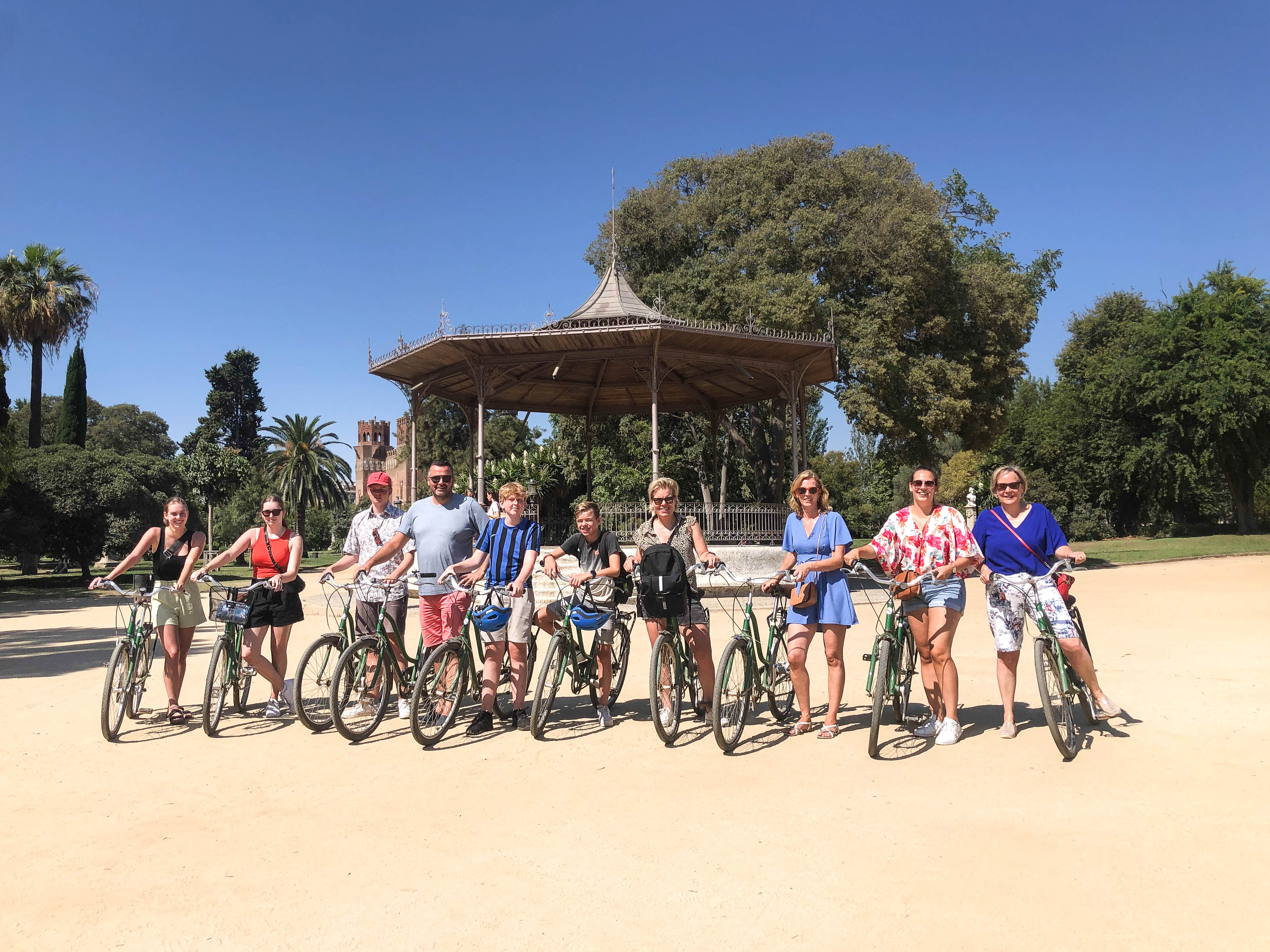
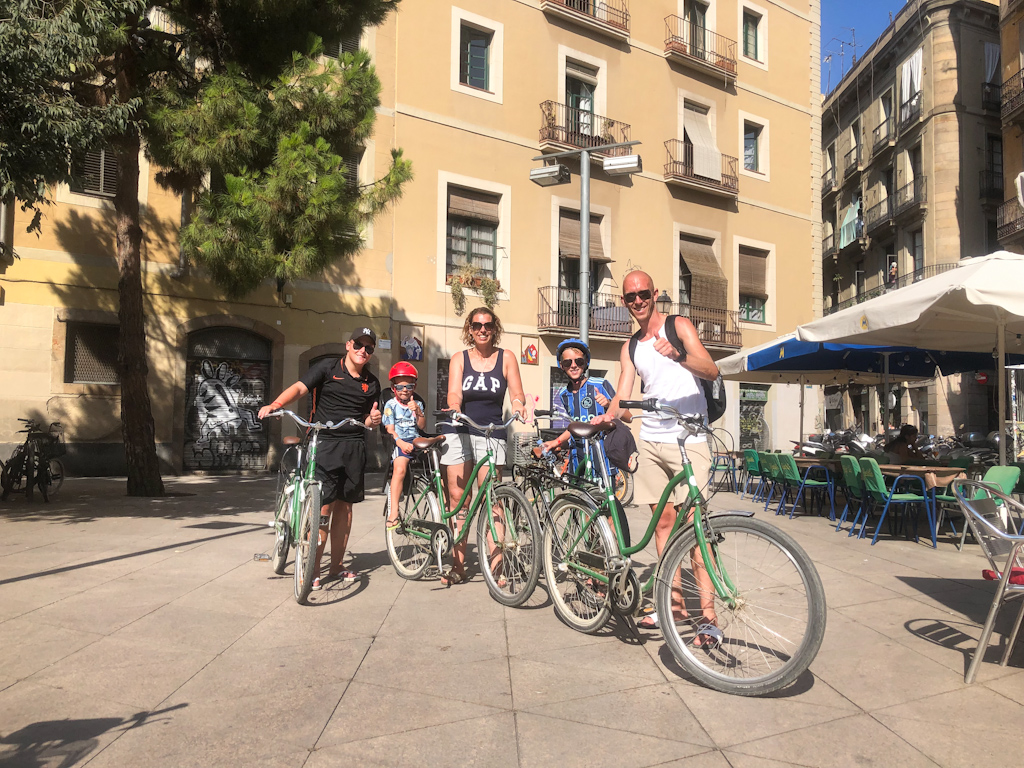
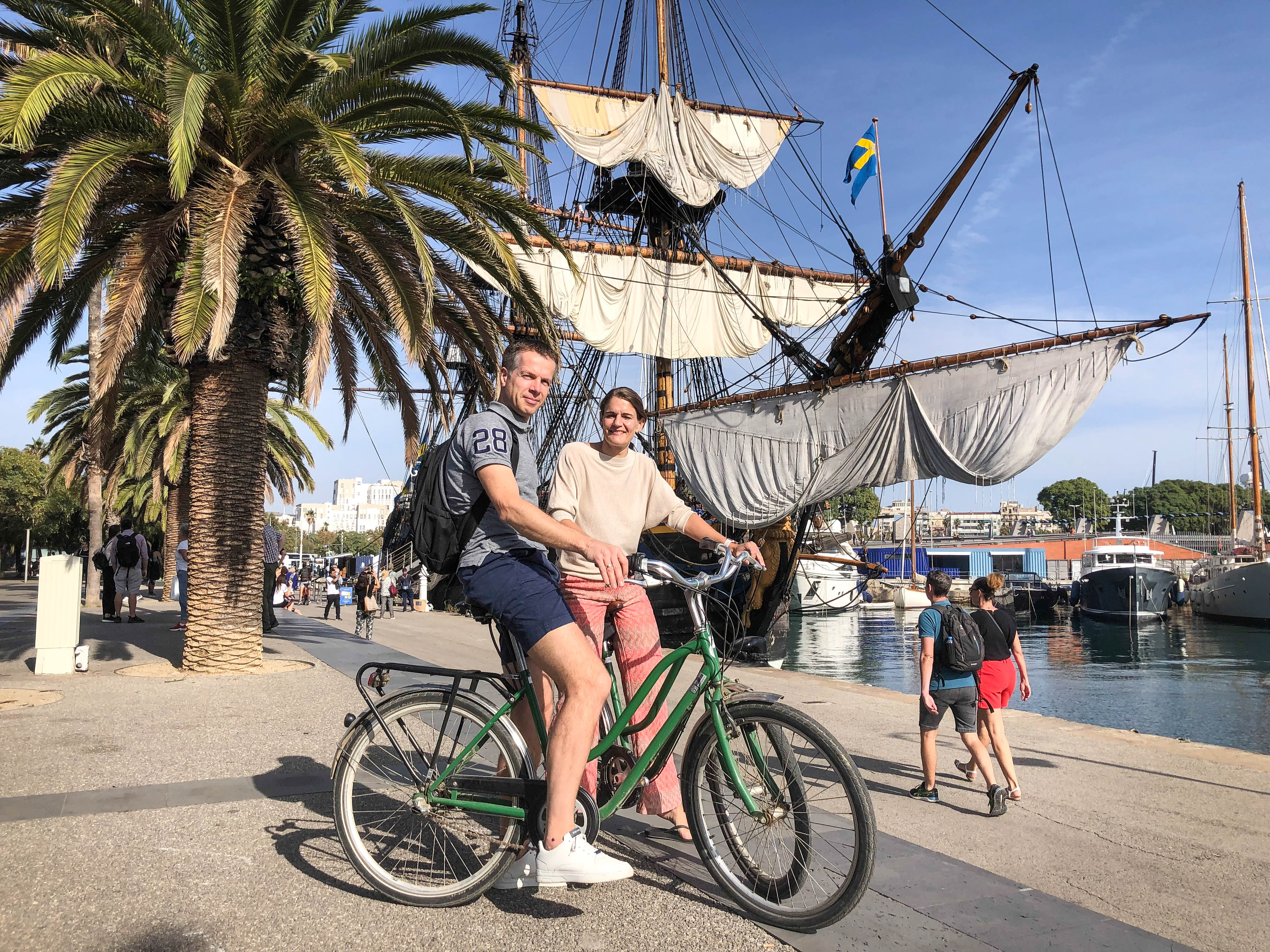






























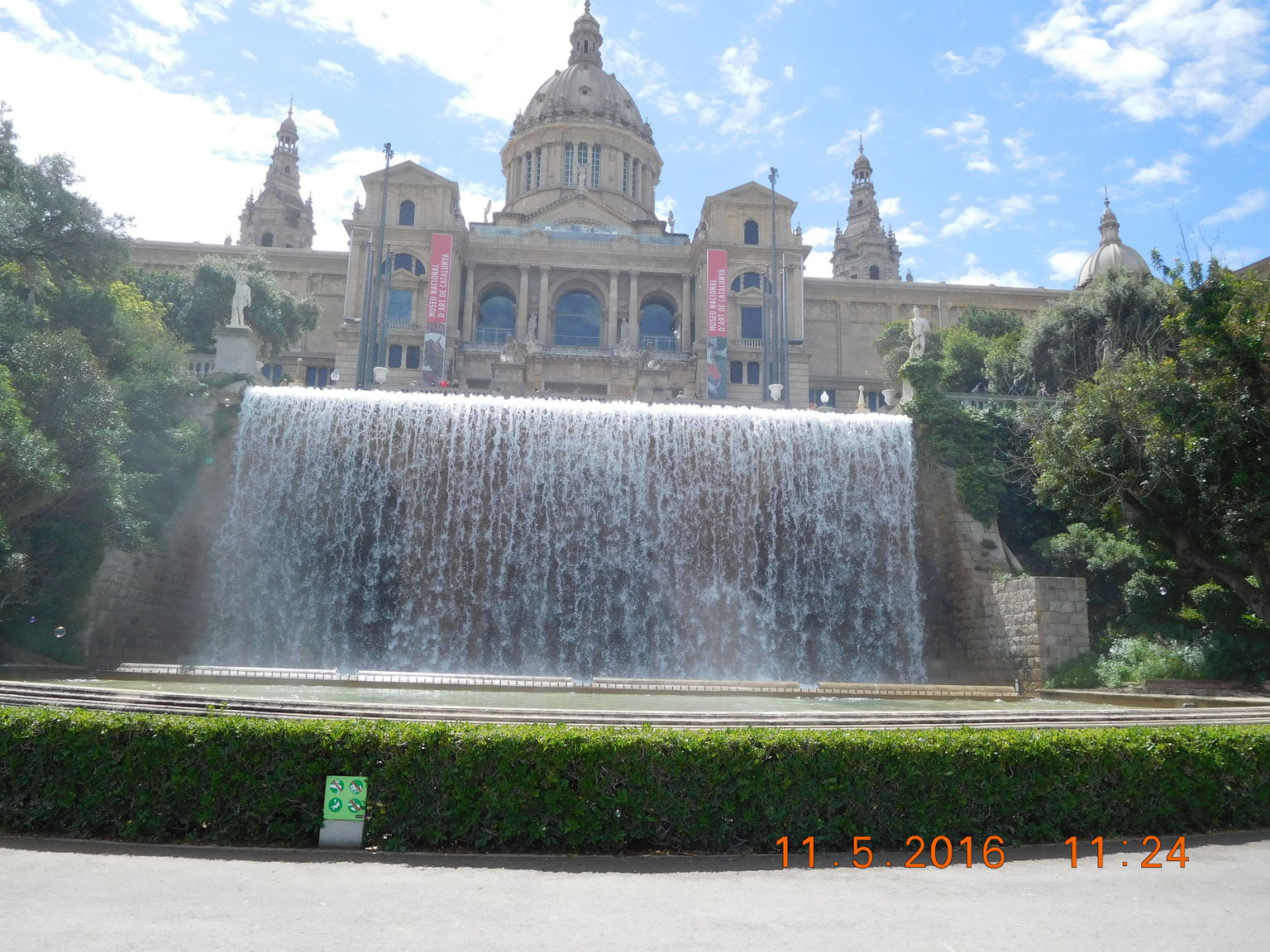


















Create an account to